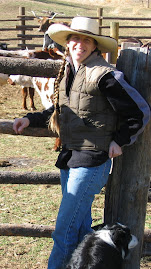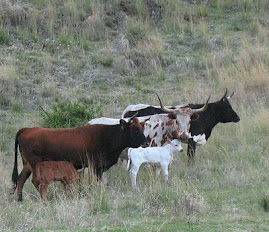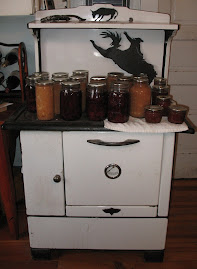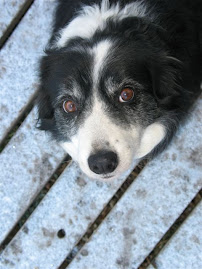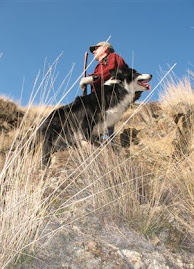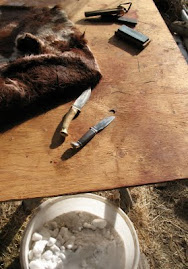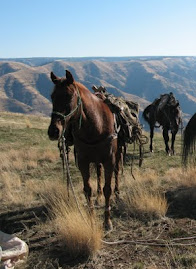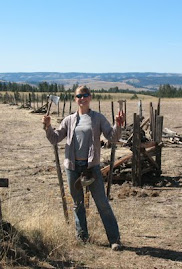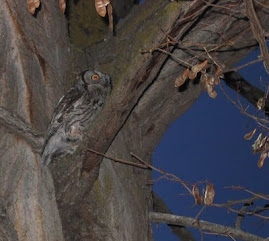
I assured them the longhorns were great, lolling in lush grass, in no hurry to leave the canyon benches for the summer ground. The girls on the other hand, had been hard at it going over miles of fence out on the prairie, trying to patch up a mess left behind from rush-hour at the elk-way.
Several extra large elk herds decided to spend more time on the private prairie lands than on the public lands this winter. A few landowners became concerned about the loss of feed that they were counting on when the time would come to bring their cows out to the summer range. So a "hazer" was hired. I believe his job was to encourage the elk to move back toward public rangeland, where they could happily munch their way toward summer.
However, between the elk and the public land are a lot of fences. Fences people need to keep their cows where they are supposed to be. Fences that keep certain ground from being over grazed and encourage cattle to use other ground. Fences that keep our longhorn bulls out of the neighbors' hornless herds. Fences that keep cattle out of riparian areas or in holding pastures.
Some of those fences are almost twice as old as I am. Those are "historic" fences, a testament to good split material, like tamarack, and yucky, but effective barbed wire. The crux of them all is a decently constructed rock jack, crib or half crib. It's amazing when you think of all those miles of fence defying gravity for years and years and years. And then you think of the guy who built that fence for the very first time, back when you could ride to the nearest grange hall every month and stay up all night dancing and eating sandwiches and pie.
The girls had been out on the prairie in the pouring rain for two days. Stretching, splicing, stapling, hammering, staying, hefting, and pounding. They looked slightly disgusted just mentioning it. And yet, somehow even fencing in the rain makes a person feel useful. It's necessary and you know somebody somewhere is really appreciating the fact that you're out there doing it and they aren't.
When it pours everything is wet. When it pours for six out of seven days a week for a couple weeks, everything is saturated. We all know we're only a cloudburst away from disaster. Just across the Wallowa's, a storm cell parked above North Pine Creek, swelling the creek into a raging river that carved off football field sized sections of a major road. Bridges washed out, houses were flooded.

At Horse Creek, the Imnaha left its banks overnight, but we got by with minor flooding and our bridge was impassable for only half a day. Still, with the memory of the massive 1,000 year flood event of 1997, we never turn our backs on the river when there's this much rain.
I'm watching the grass grow and it's like getting an awesome interest rate on the money in your savings account. Out in the valley, an odd silence lays across the afternoon fields. No shush-shush of irrigation sprinklers. The farmers quit irrigating weeks ago. It's just too wet.
I don't know much about climate change, but I know our part of the world is supposed to get "warmer and wetter". This spring it feels more like colder and wetter, with the coldest May on record and people's lawns beginning to look like hayfields just before first cutting.
The sunset tonight was unexpectedly beautiful, the violet stretch of sky, fiery rays of sun turning salmon, then muted tangerine along the ridged horizon, fading upward in faint rainbow layers through yellow into green, into robin's egg blue into navy blue into midnight blue. I'm stunned by the expanse of it, by the color! Grey day after grey day, smothered by rain clouds, I'd forgotten how beautiful our summer evenings usually are. So for now, I'm loving every minute of sun, still thankful for the rain, just hoping it will let up a bit so we can all dry out for a change.
From Sara at Magpie Ranch, home of Bunchgrass Beef


